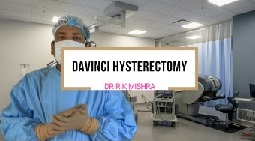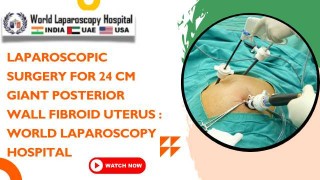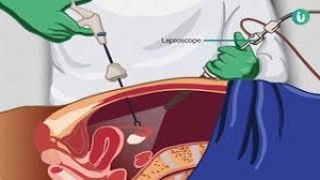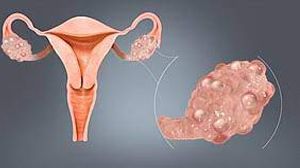Laparoscopic Total Hysterectomy (TLH) in Conjunction with Incisional Hernia Repair
Add to
Share
4,022 views
Report
2 years ago
Description
Laparoscopic Total Hysterectomy (TLH) in Conjunction with Incisional Hernia Repair Introduction: Laparoscopic Total Hysterectomy (TLH) is a minimally invasive surgical procedure used to remove the uterus entirely. It has gained popularity over the years due to its numerous benefits, including shorter recovery times and reduced scarring compared to traditional open surgery. Incisional hernias, on the other hand, occur when a portion of the abdominal wall weakens and allows internal tissues or organs to protrude through. While these two procedures may seem unrelated, they can be performed simultaneously in certain cases, offering advantages in terms of patient recovery and cost-effectiveness. In this article, we will explore the combination of TLH and incisional hernia repair, highlighting the benefits, considerations, and patient outcomes associated with this approach. Why Combine TLH with Incisional Hernia Repair? Minimized Recovery Time: Combining TLH with incisional hernia repair allows patients to address multiple medical concerns in a single surgery. This can significantly reduce overall recovery time, as patients only need to go through one rehabilitation period instead of two separate ones for each procedure. Cost-Efficiency: Performing both TLH and incisional hernia repair in a single surgery can be more cost-effective for both patients and healthcare systems. It reduces hospital stays and minimizes the need for additional medical resources. Improved Cosmetic Outcomes: By addressing both procedures concurrently, patients benefit from a single set of small incisions rather than multiple surgeries that may leave them with more visible scars. Comprehensive Health Management: For patients who require both TLH and hernia repair, combining the procedures ensures that both issues are resolved simultaneously, leading to comprehensive health management. Patient Selection and Evaluation: Not all patients with incisional hernias are suitable candidates for simultaneous TLH. The decision to combine these procedures should be based on a thorough evaluation by a healthcare provider, taking into account factors such as the patient's overall health, the size and location of the hernia, and the severity of gynecological conditions necessitating TLH. Procedure Overview: Anesthesia: The patient is placed under general anesthesia to ensure comfort and pain control during the procedure. Laparoscopic TLH: The surgeon makes small incisions in the abdomen to access the uterus, which is then removed laparoscopically. TLH involves detaching the uterus from surrounding structures and removing it through one of the small incisions. Incisional Hernia Repair: After completing the TLH, the surgeon proceeds with the incisional hernia repair. This typically involves repositioning the protruding tissue or organ and reinforcing the weakened abdominal wall with mesh or sutures. Closure: The surgeon closes the incisions with sutures, staples, or adhesive strips, depending on the size and location of the incisions. Recovery and Outcomes: Recovery time for combined TLH and incisional hernia repair varies depending on individual patient factors and the complexity of the procedures. However, compared to performing these surgeries separately, the combined approach generally results in shorter overall recovery times. Patients may experience some discomfort, but the minimally invasive nature of these procedures often leads to less pain and quicker healing. It is important for patients to follow their surgeon's post-operative instructions carefully and attend all follow-up appointments to monitor progress. Most patients can return to their regular activities within a few weeks, although strenuous physical activity may need to be limited for a longer period. Continued Considerations and Risks: While the combination of laparoscopic total hysterectomy (TLH) with incisional hernia repair offers several advantages, it's essential to be aware of potential considerations and risks associated with this procedure: Patient Selection: Not all patients with incisional hernias are suitable candidates for combined surgery. The surgeon must carefully assess each case to determine whether the benefits of combining procedures outweigh the risks. Surgical Expertise: Surgeons performing this combined procedure should have experience in both TLH and hernia repair. Skilled surgeons are better equipped to handle unexpected complications that may arise during surgery. Infection Risk: There is always a risk of infection associated with surgery. Patients should be vigilant about post-operative care, follow their surgeon's instructions for wound care, and be aware of signs of infection, such as increased pain, redness, or discharge at the incision site. Hernia Recurrence: Despite successful hernia repair, there is a risk of hernia recurrence in the future. Proper surgical technique, mesh placement, and adherence to post-operative care can help minimize this risk. Menopausal Considerations: For patients undergoing TLH, menopausal symptoms may occur sooner due to the removal of the uterus and ovaries. Patients should discuss hormone replacement therapy and its potential benefits and risks with their healthcare provider. Adhesions: In some cases, surgeries can lead to adhesions, which are internal scar tissues that can cause pain and complications in the future. Minimally invasive techniques used in laparoscopic procedures may reduce the risk of adhesions. Individual Variability: Every patient is unique, and individual factors such as age, overall health, and the complexity of the conditions being treated can influence outcomes and recovery times. Open communication with the surgical team is crucial to managing expectations. Long-Term Follow-Up: Patients who have undergone combined TLH and hernia repair should have regular follow-up appointments with their healthcare providers to monitor their overall health and address any concerns that may arise. Laparoscopic Total Hysterectomy (TLH) combined with incisional hernia repair is a procedure that can offer significant benefits to select patients. By addressing multiple health issues in a single surgery, it can reduce recovery time, costs, and the cosmetic impact of multiple incisions. However, it is not suitable for all patients, and careful evaluation by a qualified surgeon is essential to determine candidacy. As with any surgical procedure, there are potential risks and considerations, but with proper care and adherence to post-operative instructions, patients can achieve positive outcomes and improved quality of life. It's crucial for individuals considering this combined approach to engage in open and thorough discussions with their healthcare providers to make informed decisions about their treatment. Conclusion: Laparoscopic Total Hysterectomy (TLH) in conjunction with incisional hernia repair is a viable option for select patients with both gynecological conditions requiring TLH and concurrent incisional hernias. This combined approach offers numerous benefits, including reduced recovery time, cost-efficiency, improved cosmetic outcomes, and comprehensive health management. However, patient selection and evaluation are critical, and decisions should be made on a case-by-case basis in consultation with healthcare providers. By addressing multiple health issues in a single surgery, patients can often achieve a faster and more streamlined path to recovery.
Similar Videos






